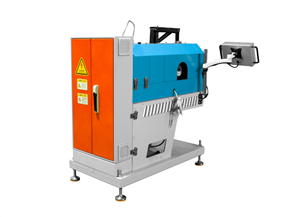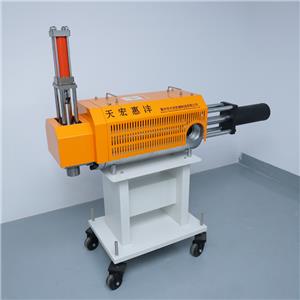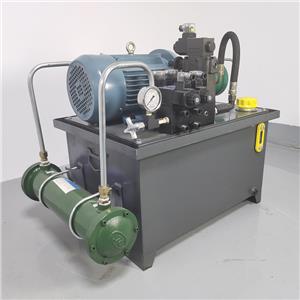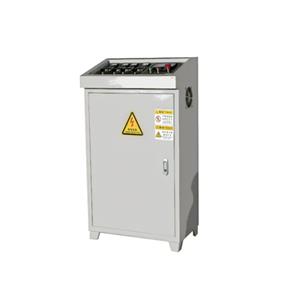The modified polypropylene industry is facing severe internal competition, and differentiated high-end products will usher in new opportunities
The rapid development of technologies such as 5G communication, the Internet of Things, artificial intelligence (AI), low altitude economy, 3D printing, and the rise of intelligent living and new energy vehicles will constantly increase the market's requirements for material performance, which will promote the innovation and development of the modified plastics industry.
01 Supply side
1.1 Decrease in raw material maintenance losses and increase in supply
Recently, the utilization rate of pp production capacity has increased by 2.14% to 77.51% month on month, and the utilization rate of Sinopec production capacity has increased by 1.25% to 80.47% month on month. During the week, the restart of Sino Korean Petrochemical STPP line and Yanshan Petrochemical Second Line 70000 tons/year facilities has led to an increase in Sinopec production capacity utilization rate; The restart of facilities such as Dongguan Juzhengyuan Double Line 600000 tons/year and Zhejiang Petrochemical Fourth Line 450000 tons/year has increased the average capacity utilization rate of polypropylene. In terms of production capacity utilization next week, Hengli Petrochemical's STPP line is scheduled for maintenance, and the North Huajin double line with a capacity of 310000 tons per year is planned to restart. It is expected that the maintenance losses may decrease. However, the absolute price of polypropylene has fallen to a low point this year, and it is not ruled out that businesses may take the opportunity to slow down supply through maintenance, thereby raising prices. It is expected that the utilization rate of polypropylene production capacity will operate around 77% in the near future.
As of recent data, PP equipment has suffered a loss of 197.53 million tons, a decrease of 8.44% compared to the previous period; The maintenance loss was 125430 tons, a decrease of 16.73% compared to last week; The loss of load reduction was 72100 tons, an increase of 10.74% compared to last week. New parking facilities have been added, including Ningbo Jinfa and Guangxi Hongyi; The driving equipment includes Sino Korean Petrochemical STPP Line, Zhejiang Petrochemical Fourth Line, etc; The planned driving equipment includes the North Huajin double track. Zhejiang Petrochemical and Dongguan Juzhengyuan double line restart, resulting in a decrease in equipment maintenance losses. However, the operation of the new driving device was unstable during the week, resulting in an increase in load reduction losses. Overall, with the restart of the temporary shutdown unit, the loss data of polypropylene domestic units has decreased.
Regarding the future market, in the next 1-2 weeks, the equipment for early fault maintenance will face a gradual restart, and the loss of equipment maintenance may gradually decrease. However, low prices will suppress the enthusiasm for petrochemical production, and the risk of an increase in temporary shutdown equipment cannot be ruled out.
02 Demand side
2.1 Automotive lightweighting becomes the engine of demand growth for modified polypropylene
As the automotive industry officially enters its golden age, from the perspective of automobile production, China's automobile production and sales from January to August this year increased by about 2.5% and 3% year-on-year, respectively, the price war of new energy vehicle models in the first half of the year made car companies suffer greatly, but it gradually calmed down after entering August, while fuel vehicles showed strong promotional efforts from May to July. The automobile production in August increased by 8.49% month on month. As we enter the traditional peak season for automobiles, there is an expectation of higher demand, and it is expected that the fourth quarter will continue the previous year's trend.
After experiencing the test of the epidemic in 2021, the Chinese automotive industry quickly recovered and achieved a new high in sales, with significant growth in export volume being the main driving force. In the first half of 2024, although the year-on-year growth rate of domestic sales has decreased, the overall market still maintains a positive growth trend. At the same time, China's new energy vehicle industry is showing rapid development momentum, with its penetration rate continuously increasing. From January to July 2024, the production of new energy vehicles reached about 5.83 million units, a year-on-year increase of 74.33% from January to July 2021. Leading the rapid rise of Chinese automotive companies and gradually reshaping the future pattern of the automotive industry on a global scale. Under the influence of macroeconomic factors, it is expected that new energy vehicles will maintain stable development in the fourth quarter.
2.2 Modified polypropylene for household appliances promotes domestic substitution
The home appliance industry is a traditional advantageous industry in China's national economy. Faced with the impact of real estate, the home appliance industry actively increases variety, improves quality, and accelerates the consumption upgrade with new green, intelligent, and healthy home appliance products. The effective implementation of the trade in program for household appliances in various regions and the increase in demand during the peak summer consumption season have led to a steady and rapid growth in household appliance production. The production of refrigerators, washing machines, televisions, and air conditioners from January to July 2024 was 58.968 million units, 60.879 million units, 11.2323 million units, and 176.104 million units, respectively, an increase of 3.96%, 7.48%, 2.97%, and 7.39% year-on-year from January to July 2023.
In household appliances, the demand for plastic raw materials for washing machines and refrigerators is as high as 30% -40% per unit, or even more. The plastic content in televisions accounts for 23% -25%, while air conditioners account for about 11%. The average usage on household appliances such as televisions and air conditioners is 1.5-2.5 kilograms per unit. A refrigerator or fully automatic washing machine typically requires over 100 sets of injection molds, while a television requires 60-70 sets of injection molds. The application of general plastics, engineering plastics, modified plastics, and plastic alloy materials in the home appliance industry is becoming increasingly widespread. Plastics have become the fastest growing material in the field of home appliances, and product plasticization has become an important characteristic of the home appliance industry.
2.3 Emerging industries promote the high-end development of modified polypropylene
Autonomous driving: With the development of autonomous driving technology, there are more and more electronic devices and sensors inside cars, which require lightweight and corrosion-resistant materials for protection. Modified plastics have become an ideal material for these devices due to their excellent electrical insulation and corrosion resistance. Modified polypropylene has the advantages of good impact resistance, heat resistance, corrosion resistance, and high modulus, which can improve the safety performance of automobiles. In autonomous driving technology, the improvement of safety performance is particularly important, as autonomous vehicles need to be able to withstand various challenges under complex road and weather conditions.
Low altitude aircraft: Poor endurance is a major challenge for drones. In addition to increasing battery capacity or exploring new power support, lightweight components also achieve the effect of enhancing endurance. Modified polypropylene can be purchased for the fuselage, wings, and wings of drones. In addition to being lightweight, modified polypropylene also has advantages such as formability, weather resistance, economy, and surface treatment.
03 Demand driven upgrade of modified polypropylene industry
The production of modified polypropylene showed an upward trend from 2019 to 2023, increasing to 10.0198 million tons in 2023, a year-on-year increase of 3.04%. With the rapid development of plastic modification technology, the substitution effect of modified polypropylene products on other materials continues to expand in the trend of automotive lightweighting, high-performance materials for household appliances, and green environmental protection. This will further enhance the demand for modified polypropylene products in the automotive and household appliance industries. In addition, the expansion of the application of modified polypropylene products in electronic appliances, office equipment, power tools and other fields, as well as in aerospace, high-speed rail manufacturing and other fields, also brings broad development space for this product. Driven by the downstream market, we expect the production of modified polypropylene to maintain a medium to high growth rate in the future.
Overall, there is currently an overcapacity in the production capacity of mid to low end modified plastics in China, while the dependence on high-end modified plastics is still relatively high. The application of plastic products with low density, high rigidity, high toughness, high temperature resistance, and low volatile organic compounds will become increasingly widespread, and the market will generate more demand for high-quality modified plastics. In the future, this will be due to sufficient supply of PP raw materials and prominent cost advantages. In addition, with the continuous advancement of modification technology, modified polypropylene not only replaces other products but also brings more consumption increment; Drones, robots, high-end consumer goods, sports equipment, and more will become important engines in the industry's consumer sector, and differentiated high-end modified plastics will usher in a broader development space.




